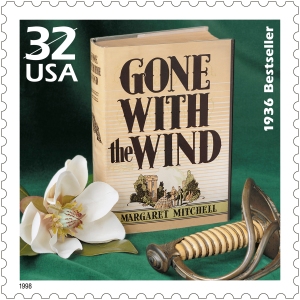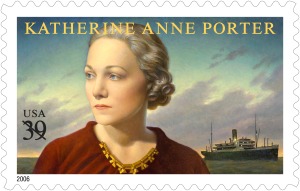 William Carlos Williams was a doctor who typed out his poems between seeing patients. His work showed readers the extraordinary in the commonplace—a broken bottle, a red wheelbarrow left out in the rain, a crumpled piece of brown paper blown along by the wind—restoring to such things some of the mystery they had lost. In deliberately plain language, Williams wrote about his routine and the everyday life around him. Even today, his work contradicts what many people think poetry is supposed to be; this was especially true at the time he began writing, when rhyming verse in the style of the English Romantics was in fashion.
William Carlos Williams was a doctor who typed out his poems between seeing patients. His work showed readers the extraordinary in the commonplace—a broken bottle, a red wheelbarrow left out in the rain, a crumpled piece of brown paper blown along by the wind—restoring to such things some of the mystery they had lost. In deliberately plain language, Williams wrote about his routine and the everyday life around him. Even today, his work contradicts what many people think poetry is supposed to be; this was especially true at the time he began writing, when rhyming verse in the style of the English Romantics was in fashion.
Williams was born on September 17, 1883, in Rutherford, New Jersey. His father, an Englishman, often went on business trips to South America and spoke fluent Spanish; his mother was born in Puerto Rico. Their children grew up hearing various languages spoken around them.
Looking back on his boyhood while writing his Autobiography (1951), Williams remembered being entranced by the natural world: “To touch a tree, to climb it especially, but just to know the flowers was all I wanted.” In high school, he became interested in poetry and decided to be a writer. He went into medicine to support his writing, entering dental school at the University of Pennsylvania in 1902, but switching to medical school a year later.
In 1913, Williams went to the watershed art exhibit known as the Armory Show, where he saw Marcel Duchamp’s “Nude Descending a Staircase (No. 2)” and other works which caused him to laugh out loud in wonder and appreciation—and to think about how poems looked on the page. Williams realized he wanted to treat words as words in the same way these painters worked with paint as paint, not worrying so much about representing nature but instead adding to it. As he later wrote in his Autobiography, “It is NOT to hold the mirror up to nature that the artist performs his work. It is to make, out of the imagination, something not at all a copy of nature, but something quite different, a new thing, unlike any thing else in nature, a thing advanced and apart from it.” He also resolved that his artistic materials—subject matter and language—would be found locally, rather than in some rarefied aesthetic realm. This is one of the reasons why his work is often said to highlight the universality of the local.
Many of his early, experimental poems are now considered classics, including “This Is Just to Say” (about eating the plums his wife had stored in the icebox), “The Great Figure” (about a fire truck speeding down a rainy street), and the poem widely known as “The Red Wheelbarrow” (“so much depends / upon // a red wheel / barrow….”). In addition to poetry, Williams wrote plays, short stories, novels, and essays. His prose works include the novel A Voyage to Pagany and In the American Grain, a series of innovative essays on historical events and figures including George Washington, Ben Franklin, and Abraham Lincoln.
Digital Color Postmarks (click to order)
In another formal experiment, Williams developed “the variable foot”—a unit of one or several words intended to have the same weight in the poem—typically grouped in threes to make up a triadic line that, in the words of one critic, “combines the staccato and fragmentary nature of American speech with a dreamy fluency that is both haunting and hypnotic.” He used this triadic line in various works, including “Asphodel, That Greeny Flower” (from which the following lines come): “It is difficult // to get the news from poems / yet men die miserably every day / for lack // of what is found there.”
Williams died March 4, 1963, at his home in Rutherford. His longest poem, Paterson, a collage mixing prose and poetry with “found objects” such as letters from friends, stretched over many books. For his late collection, Pictures from Brueghel (1962), Williams won the Pulitzer Prize for Poetry, awarded posthumously in 1963. His manner and language were such that Williams seemed distinctively American even when writing about the paintings of an old Dutch master.
William Carlos William is one of ten poets featured on the Twentieth-Century Poets pane. The stamps will be issued on April 21 in Los Angeles, California, but you can preorder them today!
 Whether or not it makes viewers hear the siren, the painting is a witty homage to Demuth’s friend. The words “Bill” and “Carlos” appear—the latter on a theater marquee in the background—and the poet’s initials are painted at the bottom. In a sly, self-referential joke, the fire engine in Demuth’s painting is speeding past a store window bearing the legend “ART Co.” The work prefigures Pop art and speaks to the way the arts (in this case, painting and poetry) can influence each other.
Whether or not it makes viewers hear the siren, the painting is a witty homage to Demuth’s friend. The words “Bill” and “Carlos” appear—the latter on a theater marquee in the background—and the poet’s initials are painted at the bottom. In a sly, self-referential joke, the fire engine in Demuth’s painting is speeding past a store window bearing the legend “ART Co.” The work prefigures Pop art and speaks to the way the arts (in this case, painting and poetry) can influence each other.










